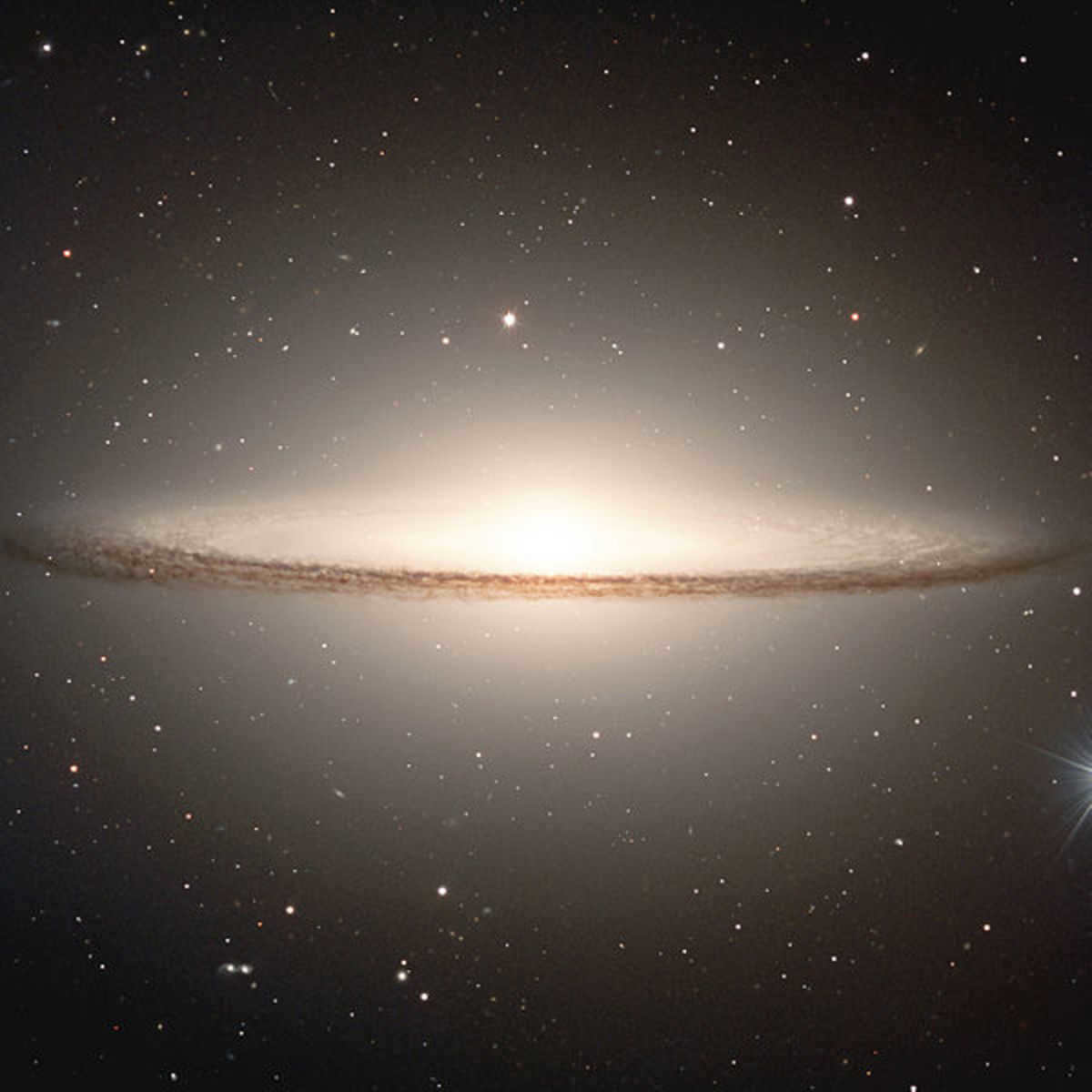
The galaxy Sombrero Hat can be found in the Field of Nebulae, which is located in the constellation of Virgo.
ESO, via Wikimedia Commons
Constellation Virgo
The constellation Virgo is one of the oldest constellations and has a captivating mythological background.
Virgo is abundant with nebulae and double stars, although many of them are not visible to the naked eye.
However, if you possess a powerful telescope, you will be treated to a magnificent spectacle. Join me on a journey into the realm of Virgo.
Mythology of the Virgo Constellation
The origin of the name Virgo can be traced back to the goddess Astraea, who was known as the “maiden”. Astraea was the daughter of Jupiter and Themis, the goddess of justice in Greek mythology.
In ancient times, when gods and goddesses roamed the earth, Astraea was highly revered and took care of her people. However, as the world entered the Copper and Iron Ages, Astraea grew disillusioned with humanity. She believed that humans had become too wicked, and she no longer wanted to interact with them. As a result, she decided to ascend to the heavens, leaving humanity to fend for themselves.
She rose up into the heavens, to the current location of the Virgo constellation. This constellation can be found along the ecliptic. She dwells within the Golden Belt of the Zodiac. Adjacent to her is the Libra constellation, which represents the Libra of Justice.
Ancient Egyptian myth of Virgo
Virgo was linked to the goddess Isis in Egyptian mythology. A monstrous creature named Typhon relentlessly pursued her until she discovered an ear of grain and let it fall. All the grains transformed into the fainter stars of the Milky Way.
The Egyptians held great significance to the brightest star in Virgo, known as Spica. They constructed altars to honor this star and referred to it as the Star of Prosperity. Interestingly, the name Spica translates to “ear of wheat.”
Until recently, older star charts depicted Virgo in the sky, clutching its wheat stalk, Spica.
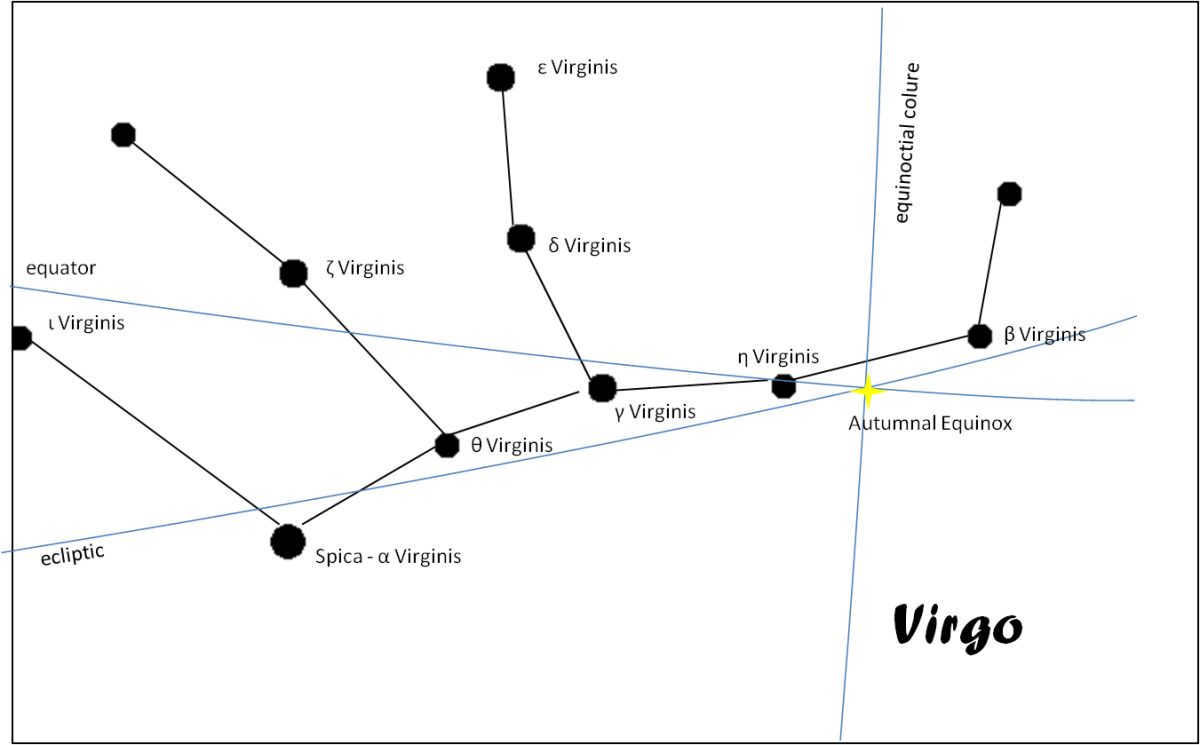

Virgo is a constellation that can be found between Leo and Scorpio on the ecliptic. It is part of the Zodiac and is known for its major stars. One of its brightest stars is Spica, which is located just south of Arcturus. Finding Arcturus can be helpful when searching for Spica. Take a look at the photo on the Virgo Diamond to see the constellation.
The position of Virgo in the sky
Virgo is where the equator, the ecliptic, and the color of the equinoxes intersect in the sky. This imaginary point of intersection is near the star η Virgo and is referred to as the autumnal equinox. When the sun passes through this location, it marks the moment of the fall equinox. After this point, the sun will continue its southward movement from this imaginary intersection.
Several fascinating fictional configurations comprise portions of Virgo. If a line is drawn between Denebola (the brilliant star in Leo) and connected to ε, γ, and β of Virgo, a square is formed where numerous nebulae can be observed in the celestial sphere. In fact, the German astronomer Herschel was the first to discover at least 323 of them! This phenomenon is commonly referred to as the “Field of Nebulae”.
The “Virgo Diamond” links Spica in Virgo with three other stars, namely Cor Caroli in the Cane Venatici constellation, Arcturus in Volopas, and Denebola in Leo. Identifying these relatively luminous stars aids in locating the Virgo constellation in the night sky.
Leo constellation: Stars with Latin and Greek names
In order to facilitate the memorization of the stars within the Leo constellation, astronomers have assigned them Latin names. However, they also possess Greek names. Magnitude serves as an indicator of a star’s brightness, with higher numbers indicating lower brightness levels.
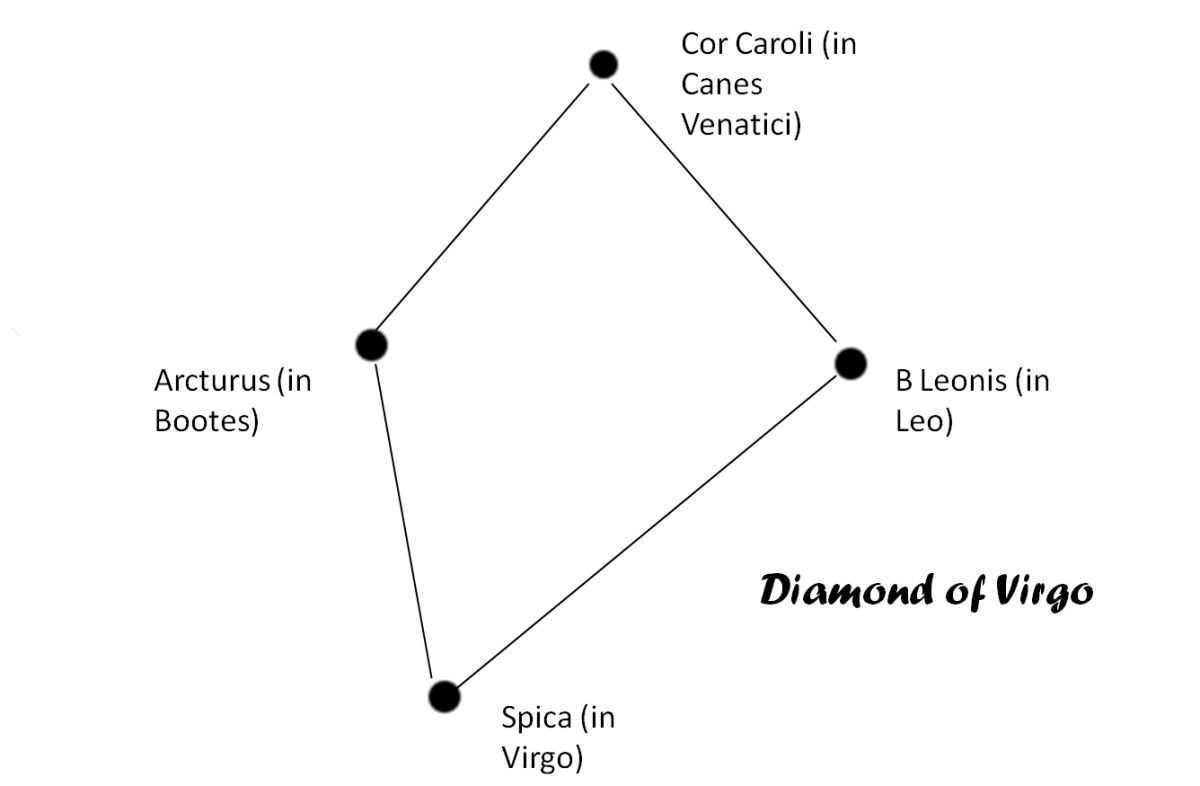
The Virgo Diamond is composed of four luminous stars situated in four distinct constellations.
(c) C. Calhoun 2012. All rights reserved.
Virgo has the shape resembling the letter “Y.” Its center forms an open box with arms extending from it.
The bottom of the box contains Spica and γ Virginis. The remaining stars δ Virginis, γ Virginis, θ Virginis, and ζ Virginis form the rest of the rectangle. Virgo’s β nearly reaches β Leonida in Leo, where the Virgo cluster is located, spanning a distance of 50 million light years.
As previously mentioned, Spica is the brightest star in Virgo. It is a 1st magnitude star, signifying that it is one of the most brilliant stars in the celestial sphere. In fact, among the twenty brightest stars in the sky, Spica holds the 14th position.
Spica, a white star situated 181 light-years away from Earth, is also worth mentioning. Its temperature is slightly higher than that of the Sun, which is a yellow star.
γ Virginis, a binary star with a magnitude of 3.5, is significantly less luminous compared to Spica. What makes it fascinating is the fact that by 2016, these stars will appear so close to each other that distinguishing them without the aid of the most powerful telescopes will be impossible. These stars complete one revolution around each other every 171.4 years, which means that soon we will be able to witness two distinct stars again.
Interestingly, in 1756, the apparent distance between the stars of γ Virgo, as observed from Earth, was 6 inches. However, by 1836, this gap had significantly narrowed to the point where the stars seemed to merge into one. And now, history is repeating itself!
If you are interested in observing this star, it is advisable to do so when the sky is not completely dark or during moonlight.
NGC4762, situated next to ε Virginis, bears resemblance to a dazzling diamond adorned with three stars and two nebulae.
In the constellation Virgo, you will also find a plethora of celestial objects classified as “clutter” or “M” types. This classification suggests that they could be galaxies, nebulae, or similar entities. One such noteworthy object is M87, an elliptical system that emits powerful radio waves and produces streams of matter. However, observing these streams requires the use of a high-powered telescope.
M104, commonly known as the “Sombrero Hat Galaxy,” owes its name to the presence of cosmic dust that gives it the appearance of a fashionable headpiece. This galaxy is situated in the “Field of Nebulae,” but its dim magnitude makes it challenging to observe without the aid of a large telescope.
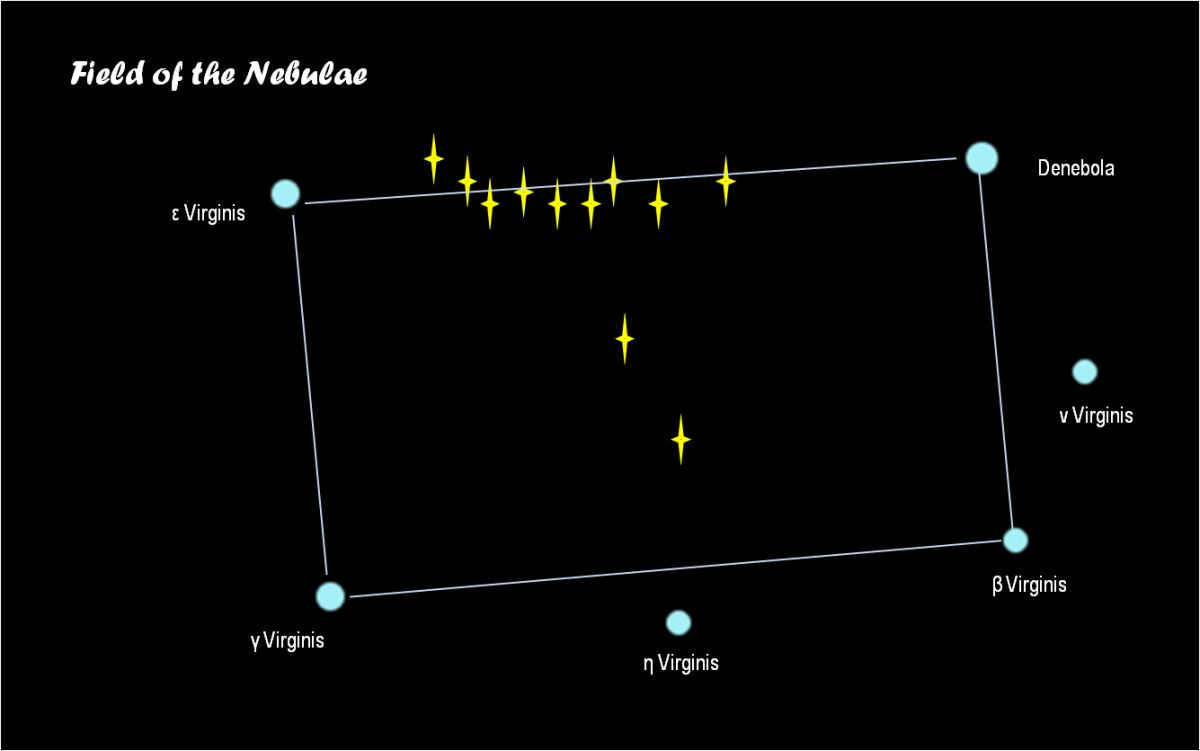
The constellation Virgo, also known as the “Field of Nebulae,” was first discovered by German astronomer William Herschel. He identified over 323 objects and galaxies within this constellation.
(c) C. Calhoun 2012. All rights reserved.
What sets astronomy apart from astrology?
In discussing the history of Virgo, I focused solely on its astronomical significance and did not include any astrological interpretations related to humans. Why did I omit that?
Well, the separation of astronomy and astrology stems from their origins as a unified field of study. Our ancestors saw the sky as a profound enigma, and they used vibrant stories and legends to make sense of the universe.
It was not until the 1500s that astronomical discoveries made by Copernicus and Galileo revolutionized the field. Copernicus revealed that the Sun was the center of the solar system, while Galileo invented the first telescope. As a result, the once enigmatic celestial sky became much more comprehensible.
In modern times, scientists rely on deductive reasoning to explore the universe, employing logical principles. In contrast, astrologers believe that celestial objects, such as planets and constellations, have an impact on human activity on Earth.
Astrology and astronomy have since become distinct disciplines, with little overlap between them.
References
The Field Book of the Heavens. Written by Olcott, William TGP and published by Putnam’s Sons in NY in 1974.
A guide to the stars and planets. Written by Moore, Sir Patrick and published by Firefly Books in Buffalo, NY in 2005.
Handy Space Answer Book. Written by Dupis, Diane Phyllis Engelbert and published by Visible Ink Press in Canton, Michigan in 1998.
Seasonal star charts. Published by Hubbard Science Company in 1972.
© 2012 Cynthia Calhoun
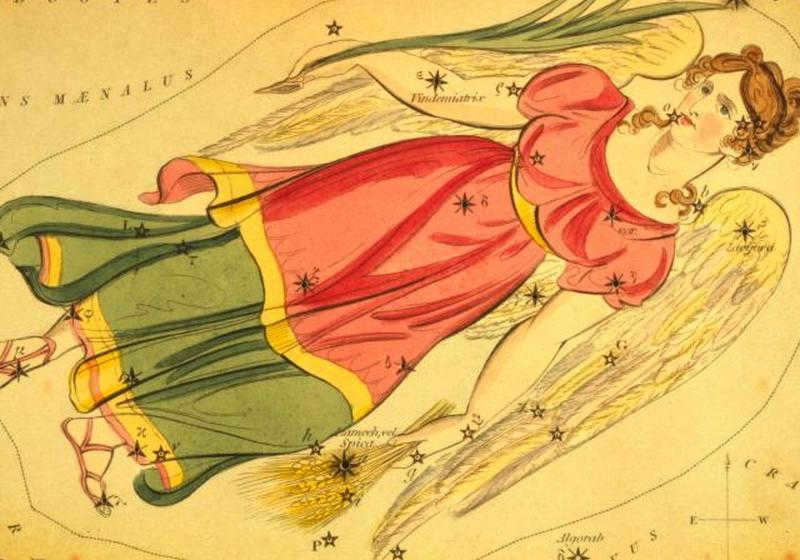
In the night sky, you will only find the constellation Virgo. She is known as the “Queen of Heaven.” Virgo is one of the 13 constellations that the earth’s ecliptic passes through, and it is also one of the 12 constellations that share the same name as an astrological zodiac sign. The stars of Virgo are arranged in the shape of a girl holding bundles of grain. Throughout history, Virgo has been associated with qualities such as virginity, purity, fertility, and agriculture.
Finding Virgo
Virgo is the second largest constellation in the sky; it is surpassed in size only by the constellation Hydra. It covers over 50 degrees of the astrological zodiac, spanning the signs of Virgo, Libra, and Scorpio. Virgo is situated between the constellations Leo and Libra.
To locate Virgo, the easiest method is to locate its brightest star, Spica. To do this, use the Big Dipper as a reference point and simply follow the curve of its handle downwards until you come across the brilliant star Arcturus in the constellation Volopas. From there, continue along the arc to the next prominent star, which is Spica.
The “Virgo Diamond” is a pattern formed by connecting Spica with three other stars, and as the name suggests, these four stars create a diamond shape in the night sky.
Locating the diamond formation can also serve as a helpful guide for finding Virgo.
Undoubtedly, it is much simpler to recognize a constellation if you possess a star map tailored to your specific whereabouts:
- AstroViewer has the capability to generate a personalized map that corresponds to your location. Additionally, they offer the option to download an interactive star map for reference in case you find yourself stargazing in an area without internet access.
- You can find Starmap on the Apple App Store. This application is designed to transform your smartphone into a constellation locator.
Astrological Zodiac and Zodiac Constellations
In ancient times, those who studied the sky were both astrologers and astronomers. Around two thousand years ago, the astrological zodiac and the zodiacal constellation in the sky were in alignment. However, due to the precession of the equinoxes, they gradually started to diverge as astrology and astronomy took different paths.
Throughout the year, the Sun appears in front of different constellations. The dates provided in magazines and online horoscopes correspond to the date when the Sun appears in a specific astrological sign of the zodiac, but not necessarily in the constellation that the signs were originally named after. Every year, when the Sun passes in front of the constellation Serpens, which is the 13th constellation of the Earth’s ecliptic, astronomers may become confused because they often overlook the fact that there are two zodiacs.
- The constellation Virgo is crossed by the Sun from approximately September 16 to October 30.
- The astrological zodiac sign Virgo is traversed by the Sun from around August 23 to September 22.
Therefore, your astrological zodiac sign does not always indicate the constellation zodiac sign that was present on the day of your birth. Nevertheless, this does not diminish the significance of constellations and their fixed stars in astrology. Constellations represent the oldest astrological tradition of mankind.
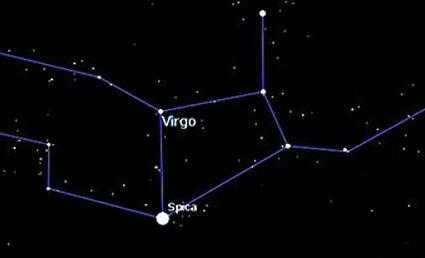
Fixed Stars in the Constellation of Virgo
Throughout history, the constellation of Virgo has held a sacred and virtuous reputation, and its fixed stars, if not afflicted in a horoscope, are said to radiate benevolence. The brightest star in Virgo is Spica, which is highly regarded in astrology as one of the most beneficial fixed stars.
Spica, “Fortunate”.
Spica, derived from the bundles of grain held by Virgo the Virgin, originates from spīca virginis which means “the Virgin’s cornucopia”. Spica appears as a single star, but it is actually a binary system of two stars in close proximity.
Interestingly, when the astrologer/astronomer Ptolemy first observed it, he categorized Spica as a star with characteristics of both Venus and Mars, representing a combination of genders. Spica is also known as “Solitary” due to its distance from other stars. This aspect reflects the androgynous and introverted qualities often associated with individuals who have the zodiac sign Virgo prominent in their birth chart.
Spica was among the 15 influential fixed stars known as the Beguine stars, which were utilized for mystical purposes in medieval astrology.
Other well-known celestial bodies
The constellation Virgo is home to 12 named fixed stars, including several other renowned celestial bodies:
- Zavijava signifies an individual in a position of authority who also answers to a higher command. It symbolizes the Virgo zodiac sign’s inclination to work for the betterment of others.
- Porrima, similar to Spica, is actually comprised of two stars. It bestows a sophisticated, charming, and appealing nature when associated with physical beauty. These are all positive attributes associated with the astrological sign Virgo.
- Syrma, also known as Al-Ghafar in Arabic, is linked to the acquisition of spiritual power. The Arabs regarded Al-Ghafar as the most fortuitous star. Through wisdom and acts of service, the sign of Virgo brings spirituality down to earth.
Meteor shower
There are two meteor streams that come from the Virgo constellation:
- The Virginid meteor showers happen at the start of the year and continue until May every year.
- The Mu Virginid meteor shower takes place between April 1 and May 12, with the peak occurring on April 24 each year.
Astrologers believe that meteor showers bring something new to Earth that is connected to the energy of the constellation they come from. In this case, there will be a new impact on the Virgo area of each person’s natal chart.
Deities and Legends
The ancient civilizations have always been fascinated by the enigmatic sky, and they sought to comprehend the universe through captivating narratives and myths. The majority of the deities linked to the zodiac sign Virgo were revered as goddesses of fertility or harvest, and they all held associations with virginity and purity.

Greek Mythology: Virgo Constellation
Throughout history, the constellation of Virgo has been linked to various Greek goddesses. One of the most prominent associations is with Demeter, the goddess of agriculture. Another notable connection is with Astrea, known as the Star Maidens. Astrea was the last immortal being to reside among humans. Legend has it that she left Earth due to the wickedness of mankind and ascended to the heavens, taking her place as the constellation Virgo.
Virgo is also associated with Dike, the Greek goddess of justice, as well as Persephone, the daughter of Demeter and the goddess of Spring.
Egyptian Goddesses
In ancient Egypt, the goddess Isis was closely linked to the zodiac sign Virgo. Isis, known as the goddess of the harvest, found herself relentlessly pursued by the monstrous Typhon. In her desperate attempt to escape, she dropped her sheaves of grain, causing the scattered grains to transform into faint stars that now adorn the Milky Way.
Another significant celestial body in Virgo was Spica, the brightest star in the constellation. This star held great importance in ancient Egyptian culture, with altars erected in its honor. It was revered as the Star of Prosperity, symbolizing abundance and good fortune.
Among other ancient civilizations.
In India, she is known as the revered deity Krishna, while in Babylonia she is worshipped as the goddess Ishtar, who is the wife of Tammuz, the god of harvest. In ancient Rome, Virgo was associated with the Vestal women.
During the Middle Ages, Virgo was closely linked to the Holy Virgin Mary.
The legend of Demeter and Persephone
One of the most renowned myths surrounding Virgo goes as follows: Persephone, the Greek goddess of Spring, was gathering flowers when suddenly Hades, the god of the underworld, emerged from the ground, seized her, and forcefully took her to the underworld. Persephone cried out for help, and her mother, Demeter, was terrified when she heard her daughter’s plea. Demeter embarked on a desperate quest, but Persephone was nowhere to be found.
Hades consented, but he was aware that if Persephone consumed any food, she would be bound to the underworld. Hence, before her departure, he surreptitiously slipped a few pomegranate seeds into her mouth. Upon discovering this, Demeter became enraged, prompting Zeus to dispatch his mother, Rhea, to mediate a resolution between Hades and Demeter. Reluctantly, Demeter agreed that Persephone could spend a portion of the year with Hades, yet during her daughter’s absence in the underworld, nothing flourished on Earth.
Naturally, the legend of Demeter and Persephone encompasses far more intricate details than this concise summary. It is an ancient Greek tale devised to elucidate the cyclical nature of the seasons.
During the autumnal equinox in the northern hemisphere, the astrological Sun transitions into the sign of Virgo. This is a significant time as it marks the beginning of harvest season, where the Earth starts to become more desolate. It is also during this time that Persephone descends into the underworld. The absence of blooming flowers persists until the arrival of the spring equinox, when Persephone returns and the Sun moves into the sign of Aries.
The astrological sign of Virgo
In the realm of esoteric astrology, Virgo is the zodiac sign that symbolizes the devoted and humble follower, as well as the embodiment of purity, innocence, and selflessness. Virgo is associated with the pursuit of perfection, the act of creation, the art of refinement, and the constant cycle of renewal. It serves as a representation of the sacred devotion, the power of healing, and the establishment of a harmonious and divine existence on our planet. The essence of Virgo’s energy is the key to discovering self-reliance and the ability to provide service and assistance to others.

Let us examine the appearance of the Virgo constellation in the night sky. The optimal time for observation is during nights without a visible moon. This celestial formation can be found in the southern region above the horizon. Adjacent to Virgo are the constellations Leo, Libra, Veronica’s Hair, and the Raven.
Appearance of the Virgo Constellation
On a cloudless night without a visible moon, you can observe the prominent Virgo constellation, which consists of 95 stars, with the naked eye. The largest and most brilliant star within the constellation is known as Spica.
If you attempt to draw a line connecting Spica and the brightest stars in the constellation, you will create an irregularly shaped quadrilateral, forming the geometric figure of Virgo.
This figure bears no resemblance to the winged girl depicted by ancient astronomers on their maps. It is truly fascinating to contemplate the creativity and imagination of ancient civilizations.
The ancient Egyptians associated the appearance of the Virgo constellation in the sky with the start of the harvest season. This could explain why the brightest stars within this constellation are referred to as “Reapers.”
Debunking myths about the constellation Virgo
The constellation of Virgo has deep roots in Greek mythology, where it is associated with the goddess of fertility, Demeter. In ancient Greek culture, Demeter was revered as the protector of agriculture, as her divine influence nurtured the growth of plants, the fruition of crops, and taught humans the art of cultivating the land.
According to ancient tales, Demeter had a singular daughter named Persephone, who was conceived through a union with Zeus, the god of thunder and lightning. As Persephone blossomed into an extraordinarily beautiful young woman, Zeus made a promise to his brother Hades to arrange a marriage between the two.
Persephone was destined to accompany Hades to the realm of shadows, forsaking earthly pleasures, the warmth of the sun, the vastness of the sea, and the enchanting beauty of nature.
However, Hades came to the realization that Persephone would not willingly agree to marry him, so he resorted to stealing her away. With the assistance of the goddess Gaea, he was able to grow a fatal flower of extraordinary beauty. As a result, Persephone was taken from her mother, Demeter, causing her to descend into a profound state of grief.
Demeter’s sorrow manifested itself as an unstoppable torrent of tears. This overwhelming sadness had a profound effect on the world around her. The once-green leaves of the trees turned yellow and fell, while the Earth itself became frozen in time. Famine loomed over all of humanity, but Demeter remained indifferent. Her sole focus was on her missing daughter. Thus, the season of autumn emerged on Earth.
During this time, Zeus became acutely aware of the immense pain his wife was experiencing, and the potential devastation that could befall the Earth. In response, he issued a command for Demeter to return to Olympus. However, Demeter made a vow that she would not return to the realm of the gods until her beloved daughter was safely by her side once more.
Then, at the command of Zeus, it was decreed that Persephone would spend two-thirds of the year by her mother’s side and one-third with her husband Hades.
Thus, every spring, when Persephone returns from the underworld to the surface, Demeter rejoices and the earth flourishes and blooms. But when it is time for her daughter to return to her husband, Demeter becomes sorrowful and everything fades and withers.
During the time when the constellation of Virgo appears in the sky, the ancient Greeks associated it with the goddess Demeter, who would hold ripe ears of grain in her hands and radiate with joy knowing that her daughter was with her. This would signal the start of the harvest, and they believed that Demeter would bestow upon them a bountiful yield as a reward for their hard work.
Stars in the Virgo Constellation
Virgo is an ancient equatorial constellation situated between Libra and Leo. Additionally, it contains the point of the autumnal equinox. The stars within this constellation are most easily observed during the spring season at nighttime, when the constellation is sufficiently elevated above the horizon, particularly on the southern side.
The Virgo constellation can be seen with the naked eye if the night sky is clear and devoid of moonlight. There are a total of 95 stars within the Virgo constellation, although not all of them possess significant brightness. The brightest star within the constellation is Spica, and by combining this star with the other prominent stars of Virgo, we form a constellation that takes on the shape of an irregular quadrangle.
Star Designations in the Virgo Constellation
The constellation that was known as “reapers” in ancient times because it signaled the start of the harvest period in ancient Egypt, had the brightest stars. In ancient Rome, the topmost star of this constellation was referred to as “vineyard” because it appeared in the morning dawn rays during the ripening of vines. Spica, a navigational star, has been gaining attention since ancient times due to its brightness and luminosity, which even surpasses that of the Sun. The distance to Spica is 155 light years.
In the Virgo constellation, there are several remarkable stars, although they may not appear particularly noticeable at first glance. For instance, nestled between the enormous star “Spica” and the southern region of the Crow constellation, there is a small unnamed star that the ancients identified as a double and referred to as “Diplos”. These double stars are randomly scattered across the celestial sphere in the same direction, giving them the optical illusion of being paired.
Astounding celestial objects in close proximity to the Virgo constellation
Adjacent to the constellation, one can observe an elliptical galaxy with a considerable level of brightness.
There is also a spiral galaxy, which can only be seen through a telescope. In 1989, the formation of two new stars was documented within this galaxy.
A lenticular galaxy situated in the densely populated heart of the Virgo galaxy cluster. Research on this radio galaxy has revealed that gas is periodically expelled from the core, resulting in the constellation appearing as a hazy spherical region due to the heightened activity of gas matter expulsion.
The spring constellation Virgo is most effectively observed in April, when it is at its highest point and the nights are still sufficiently dark. It is part of the zodiac and holds a significant position in astrology. Additionally, it contains the location of the autumnal equinox.
For amateur astronomers, the Virgo constellation is of great interest, as it offers numerous fascinating objects for observation. After all, it is the second largest constellation in the night sky, surpassed only by Hydra.
The position of the constellation Virgo in the celestial sphere
During the spring season, the constellation Virgo can be observed in the southern part of the sky, positioned at a moderate altitude above the horizon. Its location is relatively similar to that of the constellation Orion during the winter months. Virgo can be found nestled between the constellations Leo and Libra, with Volopassus situated above it, making it relatively easy to locate. Both Leo and Libra boast prominent stars, namely Regulus and Arcturus, which are highly noticeable. Additionally, the alpha star of Virgo, known as Spica, is also quite bright and easily visible to the naked eye.
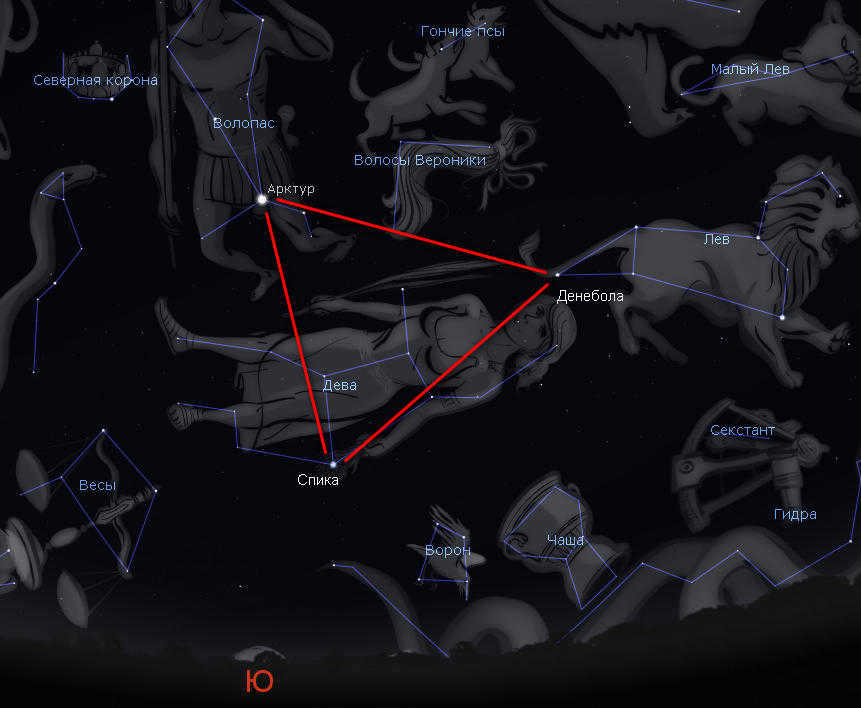
By observing carefully, you can notice that Arcturus, Spica, and Denebola, which is the furthest star in the Leo constellation, form a triangle with equal sides. It’s not difficult to locate the Virgo constellation in the night sky.
This star group contains numerous celestial bodies – solely under the unobstructed vision during a dim evening, one can witness over 170 stars within its boundary. And it is no surprise, considering the vast expanse of this constellation, which spans 1295 square degrees, ranking it among the largest. However, only a handful of luminous stars grace its skies, so let us now examine the most noteworthy ones.

Spica serves as the alpha star in the constellation of Virgo.
Spica is the most prominent star within this constellation, exhibiting a brightness of approximately +1.04 m. The value of approximately is used due to its nature as a variable star, with brightness fluctuating between +0.92 and +1.04 m over a period of 4 days. In terms of overall brightness, Spica ranks as the sixteenth brightest star in the night sky, making it relatively easy to locate.
Despite its distance of 262 light years from Earth, Spica is considered a bright star. It emits light that is 12,100 times more intense than our sun. If it were positioned any closer to us, it would be the brightest star visible.
However, Spica is not just an ordinary star; it is actually a binary star system with two bright and massive stars. Spica-A is an impressive 10 times more massive than our Sun and a staggering 7 times larger. On the other hand, Spica-B is slightly smaller but still a remarkable 7 times heavier than our Sun and 3.5 times bigger.
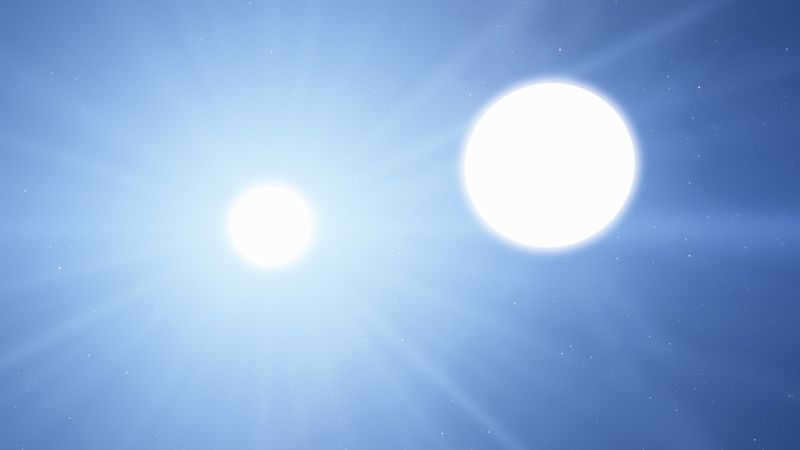

The Spica constellation is made up of a pair of extremely hot stars.
These two stars are incredibly close together, only separated by a distance of 0.12 astronomical units. This close proximity causes them to have an elongated, elliptical shape rather than a spherical one due to the strong tidal forces between them. As these stars rotate, we observe different amounts of their surface area, resulting in fluctuations in the overall brightness of the system. Additionally, Spica-A is a pulsating variable star of the Cepheid class.
The constellation Virgo represents Demeter, the goddess of fertility, holding wheat stalks in her hand. Spica represents these stalks, which is how its name is translated from Latin.
Did you know that Spica is actually featured on the flag of Brazil? It stands alone in the northern hemisphere, making it a significant star in the constellation of Virgo. This just goes to show how popular and influential Spica has been throughout history and even today.

The Brazilian flag is unique in its depiction of the star Spica, which is found alone in the northern hemisphere.
The constellation Virgo’s alpha star is situated near the ecliptic, where planets and the Moon can be found. As a result, it is occasionally obscured by planets, and the Moon passes by it closely each month, sometimes covering it completely. Every year on October 16, the Sun passes within just 2 degrees of this star.
Gamma Virgo is a binary star system
Gamma Virgo, also known as γ Vir, is the second brightest star in the constellation Virgo. It is unique because it is composed of two nearly identical yellow-white stars, both belonging to the spectral class F. With a magnitude of +2.72-2.78 m, Gamma Virgo shines brightly in the night sky. The distance between the two stars in this system is relatively small, measuring about 40 astronomical units, which is comparable to the distance between the Sun and Pluto. As a result, these stars can occasionally be observed using a backyard telescope.
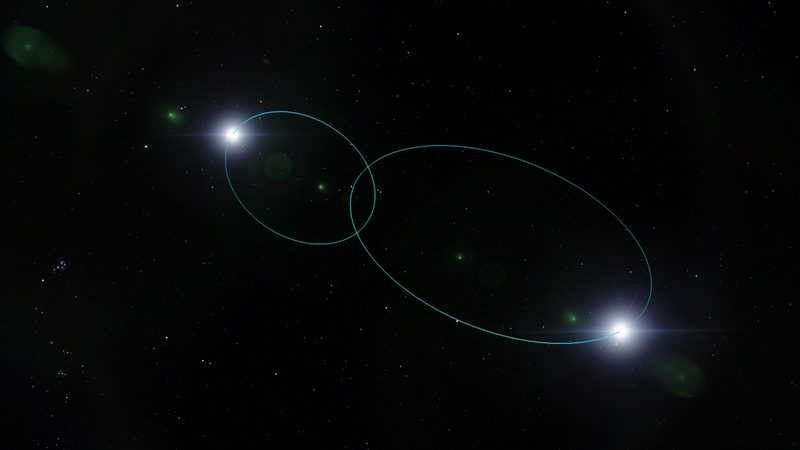
The Porrima system is known as gamma Virgo.
Both stars in this system are significantly hotter than the Sun, with surface temperatures reaching up to 7000 degrees Celsius. The orbital period of the stars is approximately 169 years. At times, they move apart to their maximum distance, making them visible through amateur telescopes. Other times, they come together and appear as a single star.
The most recent convergence occurred in 2007, and by 2020 the stars will separate again, providing optimal conditions for observation even with small telescopes.
The distance to this system is 38 light years. It is home to a binary star system known by two names – Arih and Porrima. The first name, Arih, was given in the atlas of Antonia Bechvar, although its origin remains unknown. On the other hand, the name Porrima has been more commonly used and has been known since ancient times.
Vindemiatrix – a captivating giant star
Epsilon (ε), the third brightest star in the constellation Virgo, is a yellow giant located 102 light-years away from us. Despite appearing as an unremarkable star with a magnitude of 2.83 in the sky, it holds intriguing qualities.
This yellow giant in the constellation Virgo emits 83 times more light than our Sun, even though its surface temperature is about the same, if not slightly colder. The star’s immense size, being 12 times larger than the Sun, allows for a significantly larger surface area. However, that’s not the most captivating aspect of this celestial object.
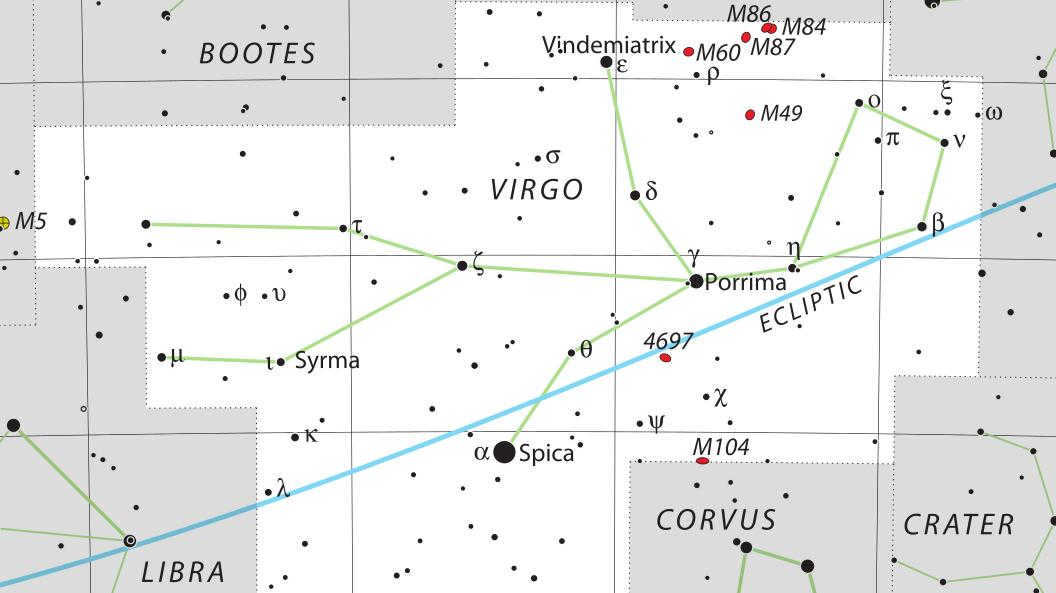
The star Windemiatrix is situated in the upper region of the Virgo constellation.
Currently, this star is undergoing a transitional phase where it has depleted all of its hydrogen reserves, leaving scientists uncertain about its internal composition. It could be in the early stages of burning helium and converting it into carbon, or this process may have already begun. Additionally, Windemiatrix now contains 15% more heavy elements compared to the Sun.
Notably, Windemiatrix is recognized as one of the prominent sources of radio emissions, ranking third in this aspect. In the X-ray range, Epsilon Virgo emits radiation that is 300 times more powerful than that of the Sun.
Furthermore, Windemiatrix is a binary star system. The second component has a brightness of 11.7 m and is located 248.7″ away from the primary component. Some propose that Windemiatrix may be associated with the Hyades, a dispersed cluster within the Taurus constellation.
Galaxies in the Virgo constellation
Undoubtedly, within such an extensive cluster, there exists an abundance of captivating stars, each possessing its own unique allure. However, the Virgo constellation is renowned primarily for serving as the epicenter of the Virgo Cluster, an immense assemblage of galaxies. Furthermore, it is within this constellation that the first-ever quasar was unearthed, an extraordinary phenomenon that can be sought after with the aid of a telescope.
Quasar 3C 273
This celestial body appears to be an ordinary star with a luminosity of 12.8 m. In order to locate it, a reflector telescope with a minimum 150 mm mirror is required. For those with expertise, it is possible to attempt to locate it using a smaller instrument.
Despite its unassuming appearance, it is important to recognize that when observing this star, you are witnessing one of the most enigmatic entities in the cosmos – a quasar. The light emitted from this celestial object has traveled a staggering distance of 2.44 billion years before reaching your eyes. It is worth noting that at the time these photons were emitted, life on Earth had only recently emerged.
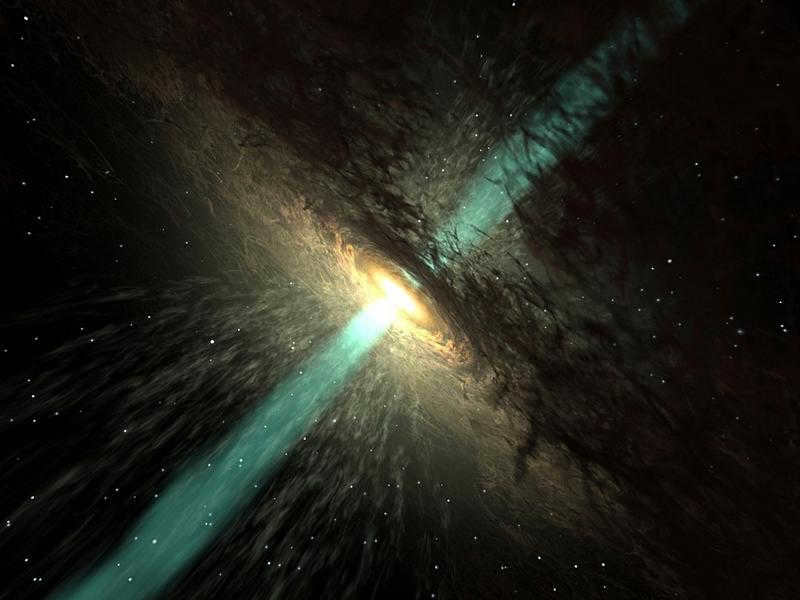
Despite its unassuming appearance, the quasar 3C 273 emits an astounding 100 times more light than our entire Milky Way galaxy and has a mass that is 886 million times greater than that of the Sun. Quasars are not stars, but rather active cores of galaxies in the early stages of formation. At the center of these cores lies a supermassive black hole, surrounded by an accretion disk of matter being consumed by the black hole.
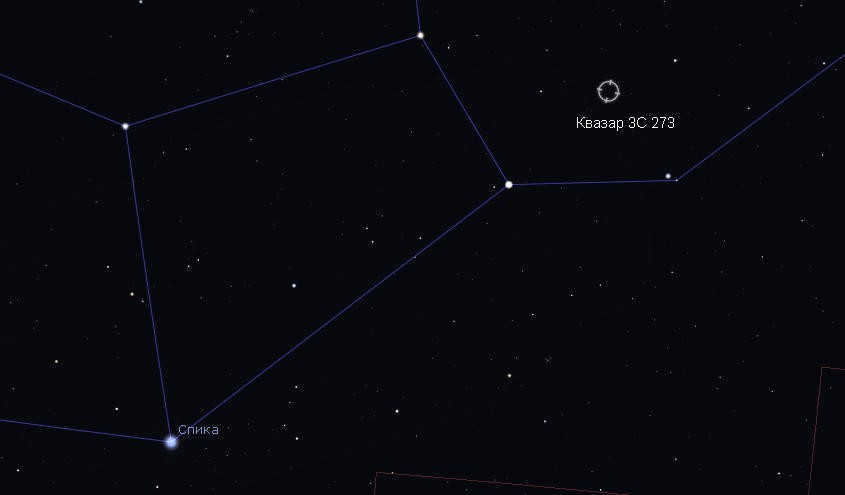
The position of quasar 3C 273 in the Virgo constellation.
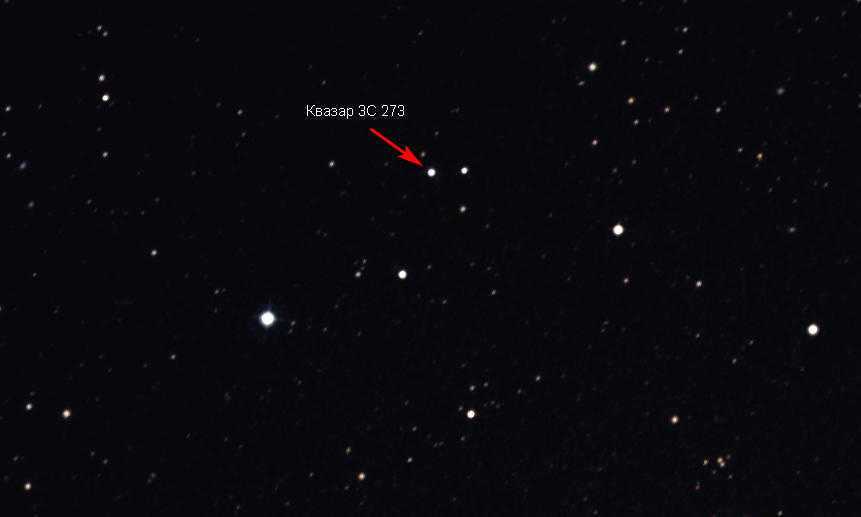

The Virgo constellation is a fascinating sight in the night sky. However, one specific object in this constellation stands out – quasar 3C 273. It is the brightest known quasar and its brilliance can be compared to that of 300 trillion suns. Despite being located 12.8 billion light years away from us, quasar 3C 273 is still accessible for observation, even through amateur telescopes. Other quasars, on the other hand, require more advanced equipment to study.
Quasars are incredibly powerful sources of energy across the entire electromagnetic spectrum. What makes quasar 3C 273 particularly intriguing is its distant location and the limited knowledge we have about it. When you observe quasar 3C 273, you are witnessing one of the most powerful and enigmatic objects in the Universe, far beyond the reach of a mere star.
Located in the upper right corner of the Virgo constellation, lies the epicenter of a colossal assemblage of galaxies known as the Virgo cluster. Gazing into this region unveils an awe-inspiring sight of more than 2000 galaxies, each hosting billions and trillions of shimmering stars!
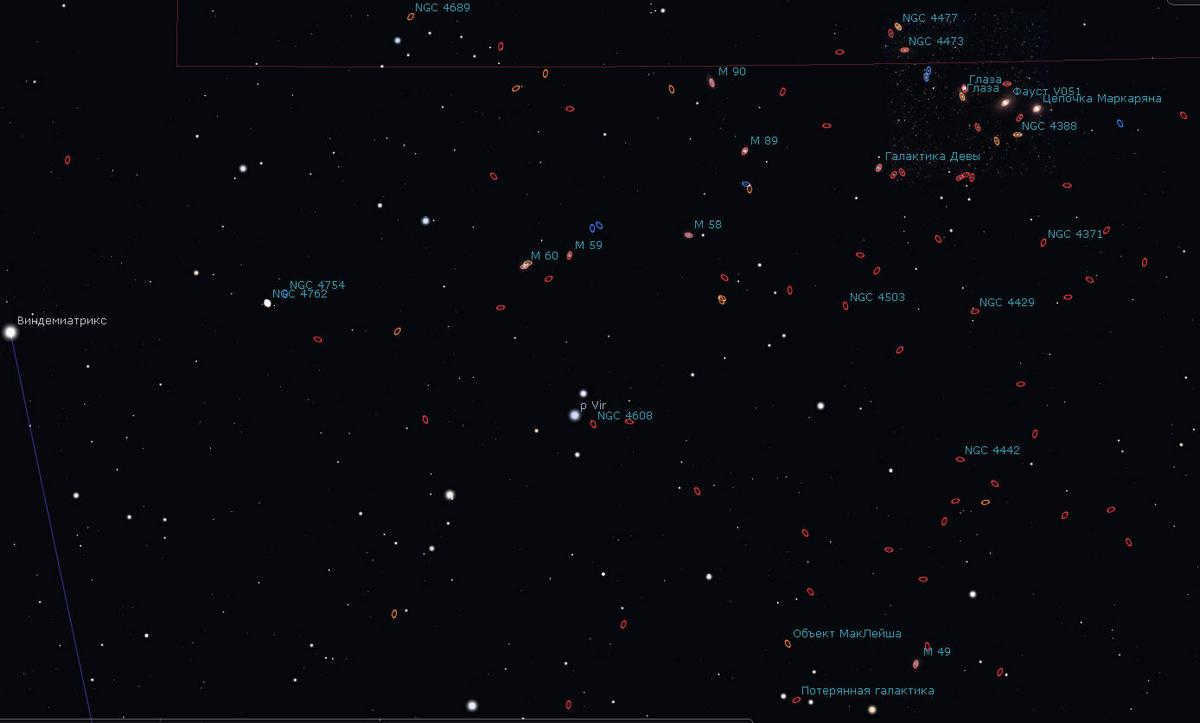
The Virgo cluster is a group of galaxies situated in the upper right corner of the Virgo constellation.
Virgo is at the core of the cluster and it extends to the constellation known as Veronica’s Hair, which was once part of Virgo itself.
The Virgo cluster is adjacent to our Local Group, which comprises the closest galaxies to us and the Milky Way, and they likely have interactions with each other.
Many of the galaxies in the Virgo Cluster can only be observed using powerful telescopes, but there are also numerous ones visible with amateur telescopes. They are all listed in the Messier catalog, such as M 87, an enormous elliptical galaxy.
Within the cluster, there exists an assemblage known as the Markarian chain, comprising of M 84, M 86, and a handful of other galaxies. Some propose that the galaxies within this chain are interlinked by the force of gravity, forming a cohesive system. Astronomer E. V. Markarian was the first to provide evidence for this theory in 1961, resulting in the naming of this collection of galaxies after him.
The Virgo cluster is an immense structure in which galaxies take on the role of stars, with each galaxy containing billions of stars. Only a small portion of this vast formation is visible to us. It could potentially be one of the largest systems, with its enormity being beyond comprehension. Within this system, there are billions upon billions of stars, with an unfathomable number of planets. Even our own Milky Way galaxy orbits around the center of this colossal cloud over a span of 100 billion years, and yet our galaxy itself is minuscule in comparison. Within this system, it is merely a speck of dust.
The galaxy M 87, Virgo A.
This galaxy, known as Virgo A, is the second most luminous galaxy in the Virgo Cluster and one of the largest galaxies in the Local Cluster. It is classified as an elliptical galaxy, meaning it lacks the distinctive spiral arms seen in other galaxies and instead appears as a spherical shape. The galaxy is located approximately 53.5 million light years away.
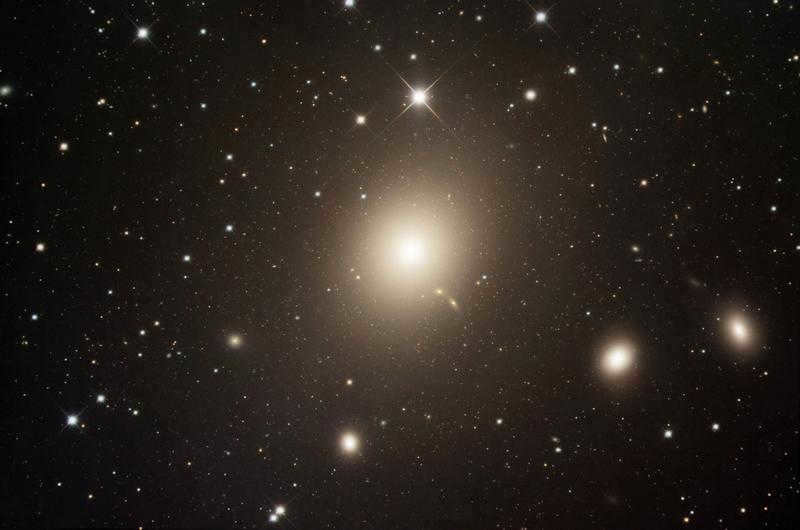
The constellation Virgo contains Galaxy M 87.
Galaxy M 87 is similar in size to our galaxy, with a cross-section of 147,000 light-years, and it houses approximately 12,000 globular clusters. In comparison, our Milky Way only has a couple hundred. However, M 87 is an elliptical galaxy, and the stars within it are much larger. The total mass of M 87 may exceed that of the Milky Way by 200 times.
Located at the center of this galaxy is a supermassive black hole, weighing 3.5 billion times more than the Sun. It is one of the largest known black holes to scientists. This black hole emits jets of matter that extend for a distance of 4900 light-years. Due to its radio emission, this source is named Virgo A.
The Galaxy M 87 is situated on the boundary of the Virgo and Coma Berenices constellations and possesses an apparent magnitude of 9.59. It can be observed even with a small 6 cm telescope, making it a notable object for stargazing.
Galaxy M 104 – The Sombrero Galaxy.
This remarkable galaxy, resembling a traditional Mexican hat, may be familiar to you from photographs. In reality, it is a combination of two galaxies – an elliptical galaxy and a flat spiral galaxy – that have merged together. The spiral component can be seen almost edge-on, with an inclination angle of just 6 degrees.
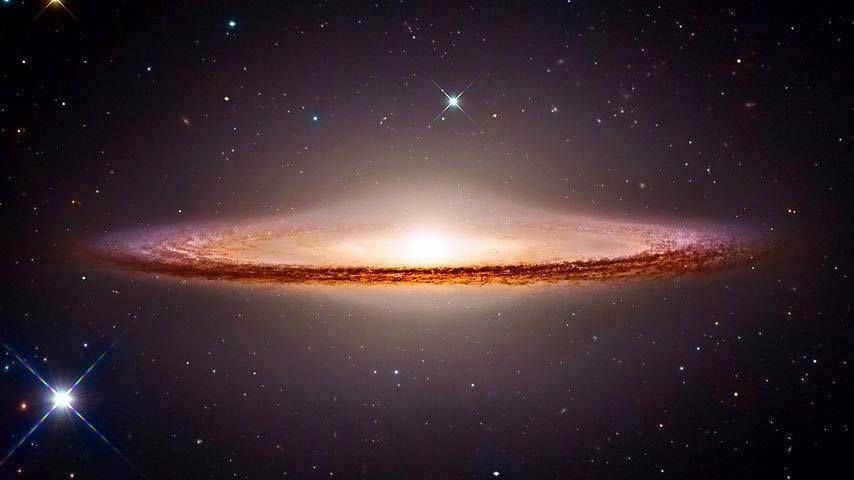

The appearance of the constellation Virgo in the night sky is depicted in the image above, which shows the galaxy M 104, also known as the “Sombrero”.
M 104 is located at a distance of 29 light years and is approximately three times smaller than our Milky Way galaxy. At the center of M 104, there is a black hole with a mass of one billion times that of our Sun, making it one of the largest known black holes. Due to this black hole, the galaxy emits powerful X-rays.
M 104 is situated separately from the Virgo Cluster and can be found in the lower part of the constellation, near the border with the constellation Corvus. It is visible in a small amateur telescope, with a brightness of 8.3 magnitude.
Galaxy M 49
This particular elliptical galaxy may not be particularly noteworthy, with one exception – it happens to be the most radiant one in the entire Virgo Cluster. Located conveniently between δ Virgo and β Leo, it appears as a slightly hazy spot in the night sky. During the spring season, when the sky is dark, it can be observed using regular field binoculars.
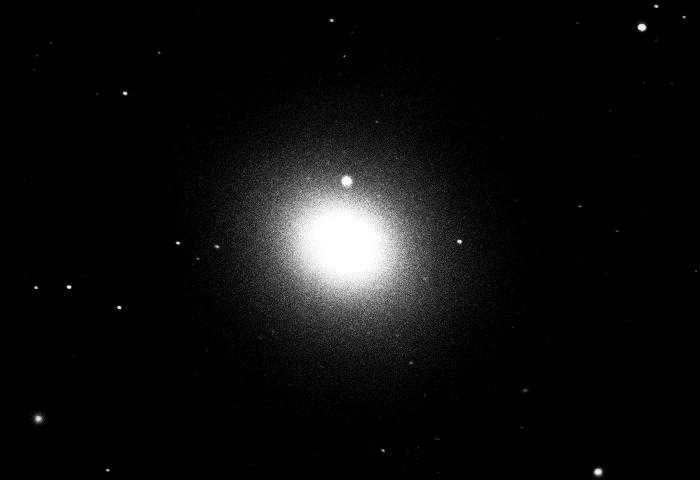
Typically, elliptical galaxies do not possess a striking visual appearance, and M 49 is no different. Even when observed through a high-powered telescope with a large aperture, it remains a hazy blotch, with its brightness gradually increasing towards the core. The stars that encircle it are part of our own galaxy and are merely projected nearby.
The M 60 galaxy: a distant and unremarkable sight.
Situated 60 million light-years away from our planet, the M 60 galaxy may not appear particularly striking at first glance – merely a nondescript orb emitting a faint glow. When observed through a telescope, it resembles more of a hazy patch, with a luminosity rating of 8.8 m.
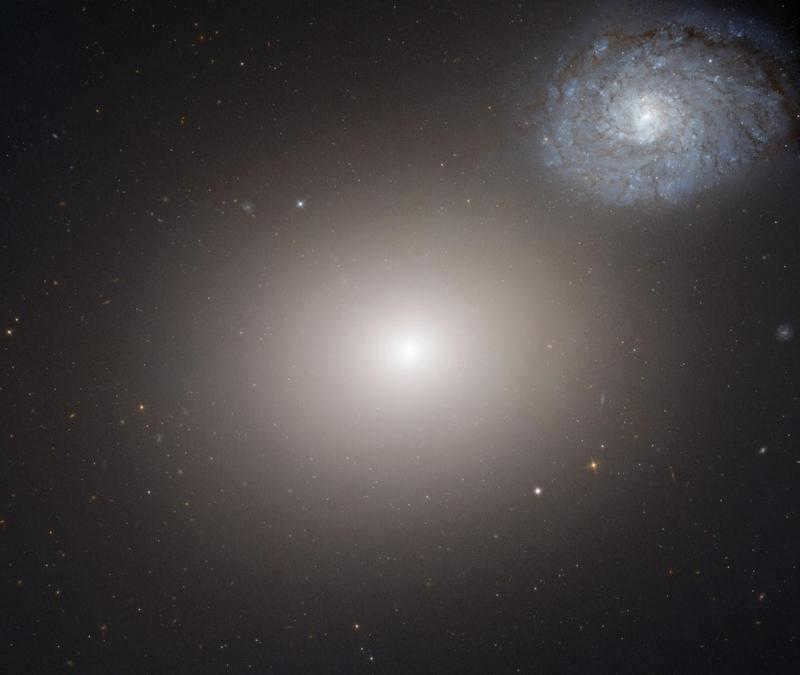
The Galaxy M 60 is accompanied by the spiral galaxy NGC 4647.
However, NGC 4647, which is a spiral galaxy, can be observed in a flat position. It is relatively dim with a brightness of approximately 11 m, and can only be observed by owners of telescopes with an aperture of at least 200 mm. The combination of these two galaxies creates a unique and captivating sight. It has been discovered that there is an interaction between these two galaxies, indicating that they are actually part of a system.
Galaxy M 61
This spiral galaxy in the Virgo constellation is quite impressive. It resides near M 49 and boasts a magnitude of 9.3. To truly appreciate its spiral arms, a telescope with a minimum aperture of 200 mm is required, although it is still possible to spot or capture images of this galaxy with a smaller telescope.
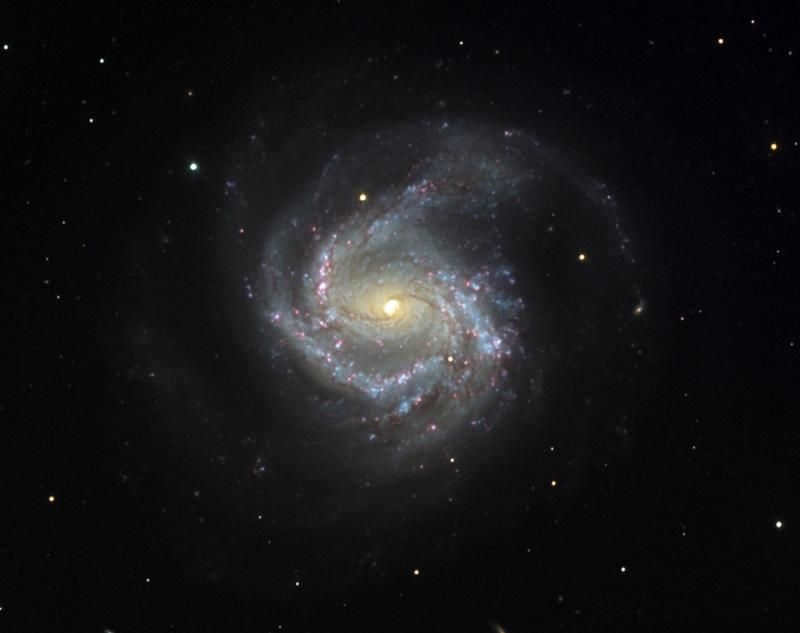
Galaxy M 58
A visually stunning spiral galaxy, Galaxy M 58 appears as a slightly fuzzy oval shape when observed through a small telescope. However, with a telescope that has an aperture of 150 mm or larger, it becomes possible to discern the galaxy’s central nucleus and outer halo. Galaxy M 58 has a visual brightness of 9.6 m and a surface brightness of 13.1 m.
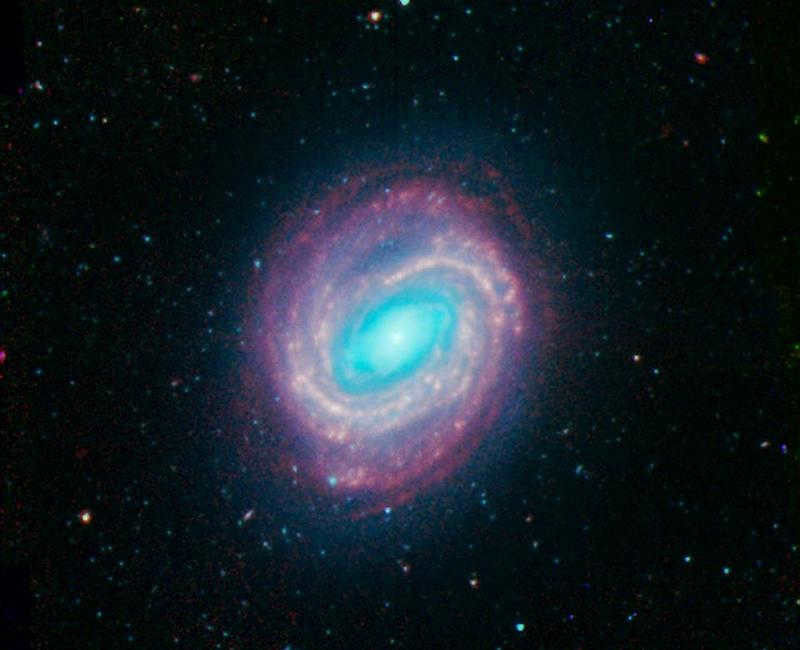
Observing the Virgo constellation throughout the year
The Virgo constellation is most visible during the spring season. It first appears in the eastern part of the sky in March and gradually rises higher as the months progress. By April and May, it can be observed at a high position in the southern sky during the beginning of the night, making it the optimal time for observation.
As summer approaches, the Virgo constellation starts to move towards the west. Due to its lower altitude, it quickly recedes to the horizon and eventually disappears by nightfall in June. It can still be seen in July, but only in the evening.
Virgo is the sixth zodiac constellation, and it holds its own significance in astrology. Individuals born between August 23 and September 23 fall under the Virgo sign.
The plants associated with this sign include poppies, asters, pansies, mother and stepmother, mint, chamomile, cereals, and medicinal herbs. The preferred stones for Virgo are cat’s eye, agate, jasper, and carnelian.
In astrology, each zodiac constellation has specific character traits associated with individuals born under it. For Virgo, these traits are divided into three parts based on the decades.
Individuals born between August 24 and September 2 are influenced by the Sun. They tend to be stable, calm, dutiful, intelligent, and resilient.
Those born between September 3 and September 11 are influenced by Venus. They may exhibit traits of indecisiveness, shyness, secrecy, and pedantry.
People born between September 12 and 22 are influenced by Mercury. As a result, they possess cunning and laziness, are pragmatic, and tend to start families later in life.
In astrology, the symbol of Virgo represents virtue, chastity, justice, and purity. Consequently, individuals born under this sign have high expectations for their partners and not everyone is able to meet them.
Virgos do not solely rely on their emotions in life. They carefully analyze everything and value order in all aspects of their lives. Virgos strive to make sense of everything and ensure it brings them benefit. They are cautious individuals who plan ahead and prefer to maintain a consistent way of life.





